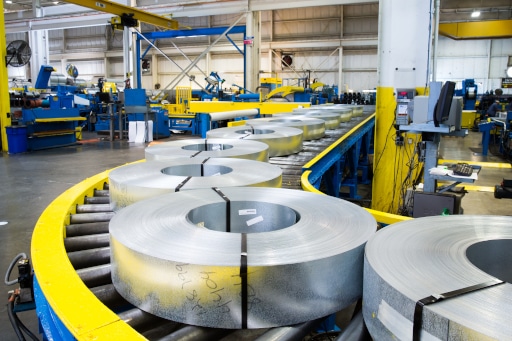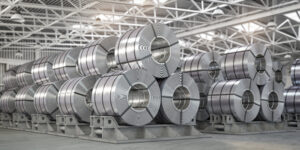The Economics of Steel: 4 Factors That Affect Steel Demand
The steel industry is a critical part of the global economy. Thousands of jobs and businesses rely on the steel industry to stay afloat, which is why when changes happen, it causes a ripple effect throughout the economy. But what impacts steel demand? Look at these 4 factors to understand what forces influence the steel industry.
- Production costs (like cost of raw materials)
- International trade dynamics (like sanctions against Russia)
- End-customer Demand (like material popularity for commercial and residential)
- Government regulations (like building codes in California)
Let’s talk about these 4 factors and why economists and steel manufacturers alike keep a close eye on changes.
How Do Production Costs Affect Steel Demand?
Raw material costs account for a large portion of the total cost of steel production. Steel is made from a variety of materials, including iron ore, coal and limestone. The price of these raw materials can fluctuate based on supply and demand, and this can impact steel demand.
For example, it’s estimated that the global steel industry uses about 2 billion tons of iron ore in crude steel production. So changes in the price of iron ore can have a significant impact on steel production.
Along with raw material costs, factors like the type of steel being produced and the size and scale of the operation matter too.
Type of steel: The type of steel produced has an impact on production costs. For example, low alloy steels are easier to forge whereas high alloy steels require more stress. Take stainless steel — an expensive product that costs far more than common tool steel.
Size and scale of operation: A large-scale operation with multiple furnaces will generally have lower production costs than a small-scale operation. For example, Pacesetter has service centers in Georgia, Illinois and Texas allowing us to process large quantities of steel for projects.
Managing production costs can be difficult, that’s why expert advice is so important. Make the best-informed decisions about steel purchasing with our team’s help.
How Do International Trade Dynamics Affect Steel Demand?
The steel industry is highly globalized, with steel being traded between countries regularly. However, several factors can affect the demand for steel production in different parts of the world. For example, international trade dynamics can have a significant impact on the steel industry.
When trade barriers are lowered between countries, it allows for greater trade volume and typically results in lower steel prices. This can have a positive impact on the steel industry by increasing demand and stimulating economic growth. However, if trade barriers are increased, it can have the opposite effect, leading to higher prices and reduced demand.
How Do End-Customers Affect Steel Demand?
End-customers are the final people in the steel sales cycle. Here’s a simplified funnel: Steel is manufactured > steel is sold to a home builder > the home builder uses steel to build a development > the houses are sold to individual homebuyers AKA end-customers.
The actions of these end-customers can cause a ripple effect in the steel industry. For example, if people are buying more new homes, demand increases and so does steel production.
How Do Government Regulations Affect Steel?
Government regulations can dictate everything from how steel is produced to how it’s traded and transported. For example, environmental regulations may dictate the use of certain chemicals in the steelmaking process, while trade regulations may dictate how imported steel can be sold in the domestic market.
Government regulations can have a positive or negative impact on the steel industry, depending on the specific regulations in question. In some cases, regulations may help to promote a level playing field for domestic steel producers. In other cases, regulations may create barriers to entry for new steel producers.
Ultimately, the impact of government regulations on the steel industry is highly dependent on the individual regulations themselves, and this can vary state by state. We’re all familiar with California’s strict laws.
What’s The Global Steel Demand by 2030?
The forecast for steel demand is expected to continue to grow over the next few years. In 2026, the global steel industry is forecast to reach a production level of 2.2 billion metric tons.
Several factors are driving this growth. There’s an increasing demand for steel products in emerging markets as well as new technologies that make it possible to produce steel more efficiently. All this means it’s a great time to buy steel. Our product lines and processing services ensure your project is built with form and function in mind.
Get A Quote Today
Contact our experts for your steel needs. We’ll provide you with the best quote for our products as well as steel processing services, including slitting, blanking, cut-to-length, and toll processing services. Schedule your call today!




